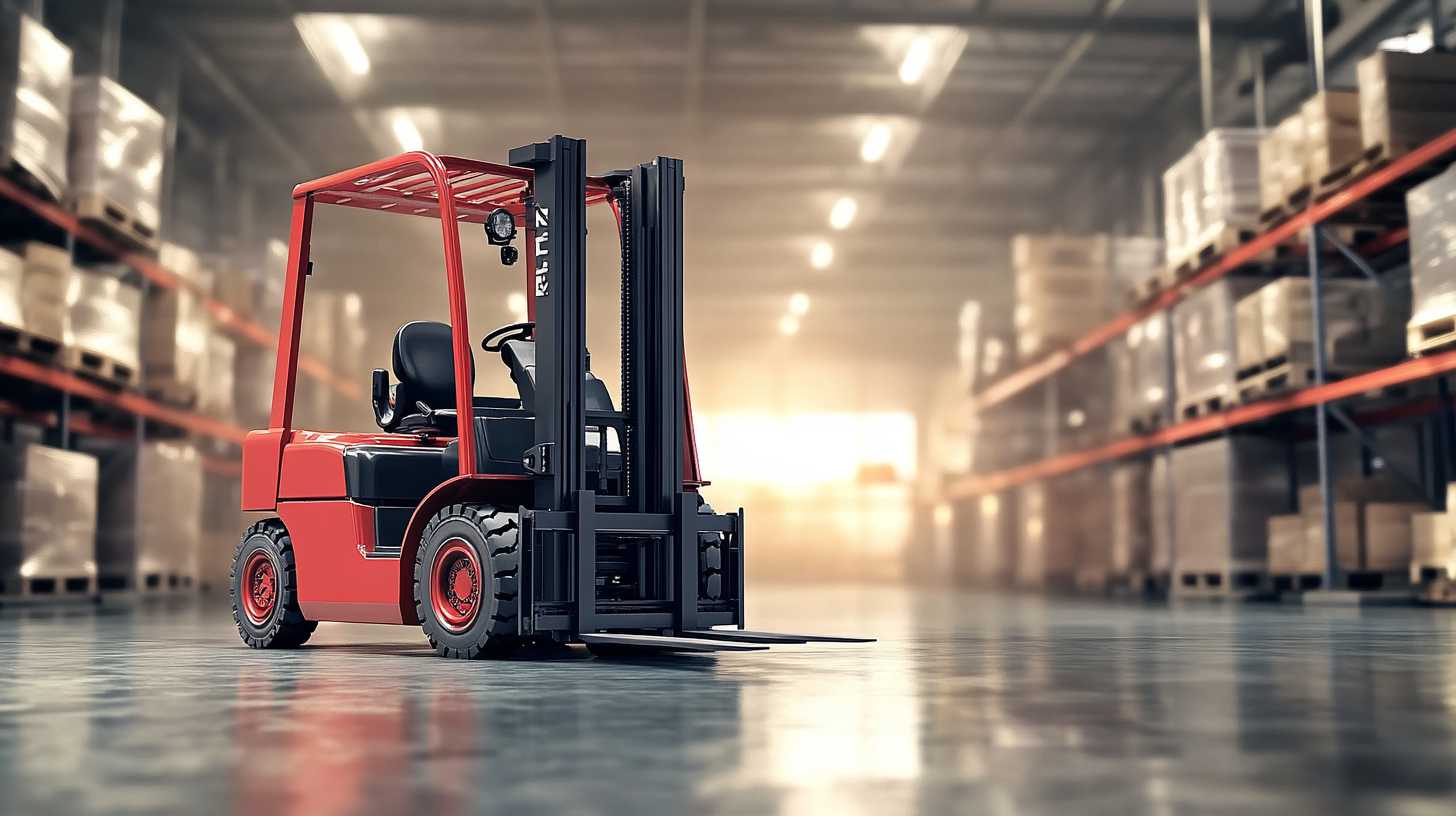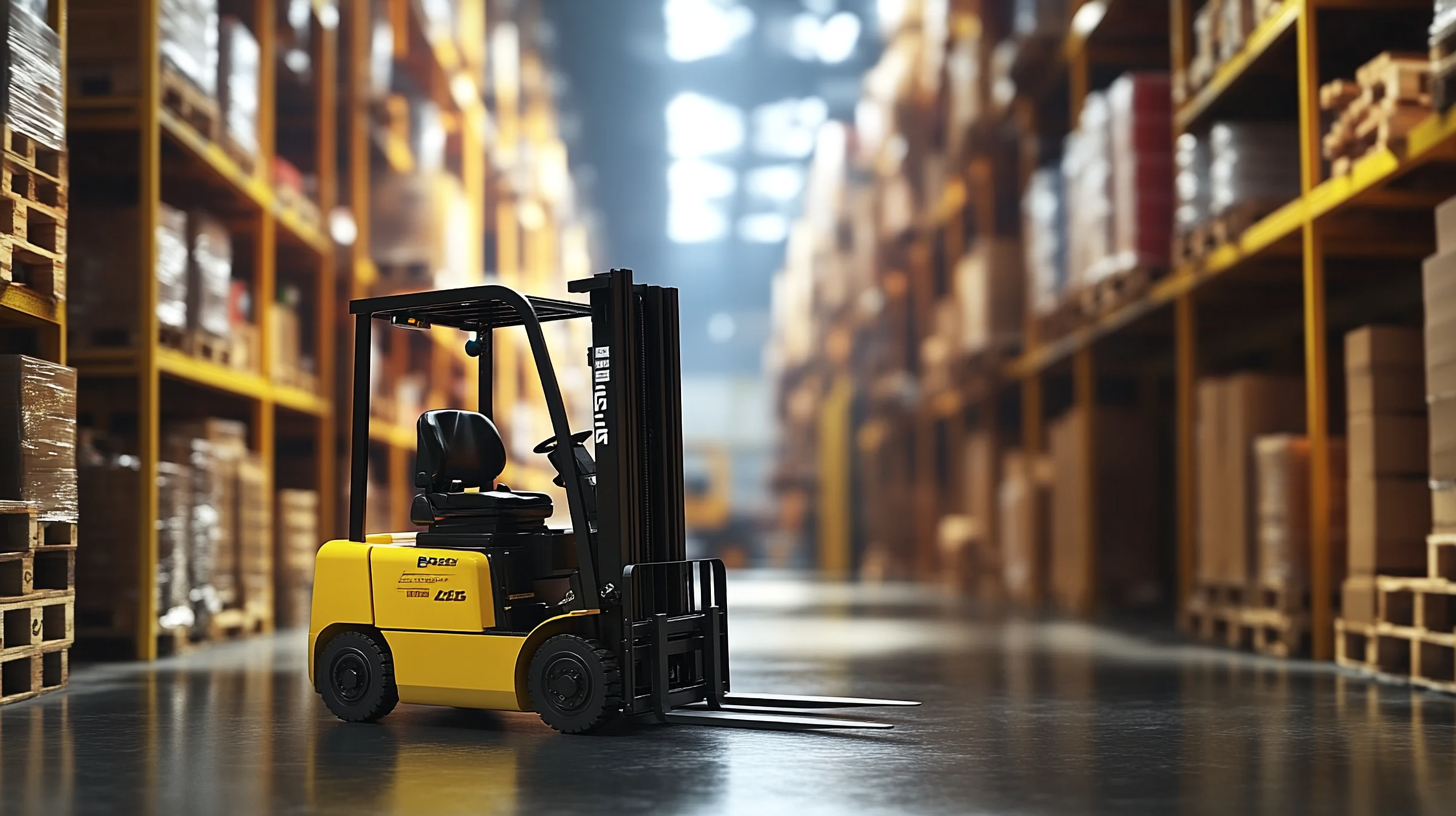Exploring the 2025 Technological Trends Shaping the Future of Best Home Forklifts
As we journey into 2025, the landscape of home logistics is transforming dramatically, particularly with the rise of innovative home forklifts designed for both efficiency and convenience. These advanced machines, built on cutting-edge technology, are poised to streamline operations within both residential and commercial settings, reflecting the global trend towards automation and smart home solutions. China, renowned for its high-quality manufacturing, is at the forefront of this evolution, producing top-of-the-line home forklifts that embody durability and advanced functionality. In this blog, we will explore the technological trends that are shaping the future of home forklifts, examining how these innovations can enhance productivity, safety, and overall user experience. Embracing these trends not only helps in managing space and resources more effectively but also positions users to stay ahead in a rapidly changing environment.

The Rise of Autonomous Technologies in Home Forklifts: A 2025 Overview
In 2025, the landscape of home forklifts is set to be transformed by the remarkable rise of autonomous technologies. These innovations promise to enhance safety and efficiency in residential environments, enabling homeowners to tackle heavy lifting and transportation tasks with ease. Autonomous home forklifts will be equipped with advanced sensors and artificial intelligence, allowing them to navigate through tight spaces and manage obstacles without human intervention. This leap in technology will not only simplify everyday chores but also reduce the risk of injuries often associated with manual lifting.
Moreover, the integration of IoT (Internet of Things) will further elevate the user experience by enabling seamless connectivity between the forklift and smart home systems. Homeowners will be able to control their forklifts remotely through mobile applications, scheduling tasks and receiving real-time updates on performance and battery levels. This interconnected approach not only enhances operational convenience but also promotes energy efficiency as users can optimize forklift usage based on actual needs. As we look towards 2025, the rise of autonomous technologies in home forklifts is set to redefine how we approach heavy lifting in our daily lives.
Exploring the 2025 Technological Trends Shaping the Future of Best Home Forklifts
| Trend | Description | Impact on Home Forklifts | Expected Adoption Rate by 2025 |
|---|---|---|---|
| Autonomous Navigation | Integration of advanced sensors and AI for navigation. | Increases efficiency and reduces accidents. | 60% |
| Smart Control Systems | Remote control and monitoring through smart devices. | Enables precision in loading/unloading tasks. | 55% |
| Battery Technology Advancements | Improved energy density and charging speed. | Longer operational times and reduced downtime. | 70% |
| Safety Features Enhancements | Incorporation of advanced safety sensors and alarms. | Minimizes workplace accidents significantly. | 65% |
| IoT Integration | Connecting forklifts to the internet for data sharing. | Enhanced operational insights and predictive maintenance. | 50% |
Market Forecast: Projected Growth of Smart Home Forklifts and What It Means
As we look towards 2025, the market for smart home forklifts is poised for remarkable growth, driven by advancements in automation and artificial intelligence. These innovative machines are not just transforming warehouse operations but are also becoming indispensable for homeowners looking to optimize their space and efficiency. The projected rise in smart home forklift adoption indicates a shift towards more integrated and automated home logistics, making everyday tasks more manageable and safer.
The implications of this growth extend far beyond mere convenience. With the increasing efficiency and capabilities of smart home forklifts, we can expect a significant reduction in the labor required for heavy lifting, benefitting not only individual homeowners but also small businesses. This trend not only aligns with the broader push for smart home technologies but also highlights a growing consumer preference for intelligent solutions that streamline daily operations. As manufacturers continue to innovate, we can anticipate diverse models tailored to various user needs, ultimately setting a new standard for how we handle logistical challenges at home.
Sustainability Trends Shaping Home Forklift Design and Manufacturing by 2025
As we look ahead to 2025, sustainability will significantly influence the design and manufacturing of home forklifts. With the global forklift market projected to double, manufacturers will need to adopt eco-friendly materials and energy-efficient technologies. This shift not only caters to an increasing consumer demand for greener options but also aligns with global environmental initiatives aimed at reducing carbon footprints.
To optimize sustainability in home forklifts, consider these tips: first, look for models that utilize electric power rather than traditional fuel to lessen environmental impact. Additionally, check for manufacturers that prioritize recyclable materials in their construction. By choosing options that integrate intelligent energy management systems, you can ensure that your forklift runs efficiently while minimizing energy consumption.
Moreover, keep an eye on innovations in lightweight designs, which reduce battery load and improve overall performance. By staying informed on the latest trends and technologies, you'll be better equipped to select a home forklift that meets both your operational needs and sustainability goals in the coming years.
Integrating IoT: Enhancing Efficiency in Home Forklift Operations
The integration of the Internet of Things (IoT) into home forklift operations is set to revolutionize how we manage logistics within our living spaces. With an increasing number of households adopting smart home technologies, IoT-enhanced forklifts promise to streamline everyday tasks while optimizing efficiency. Research indicates that the global IoT in logistics market is projected to reach $75 billion by 2025, driven largely by innovations that support automation and data-driven decision-making (source: industry reports).

IoT-enabled home forklifts can offer real-time tracking of inventory and delivery schedules, enhancing the precision of operations. For instance, advanced sensors and machine learning algorithms can predict maintenance needs, ensuring vehicles operate at peak performance and minimizing downtime. This shift not only improves overall productivity but also significantly reduces energy consumption, aligning with the growing trend toward sustainable living practices.
Furthermore, as families increasingly embrace smart homes, the benefits of connectivity will extend to safety and security. Smart forklifts equipped with IoT features can detect obstacles and adapt their routes accordingly, thus protecting both the user and the environment. These advancements represent a substantial leap toward the future of home logistics, transforming how we interact with our space and the tools we use.
Safety Innovations: How Technology is Redefining Forklift Regulations and Standards
In recent years, the forklift industry has witnessed a significant transformation driven by technological advancements aimed at enhancing safety standards. According to the Occupational Safety and Health Administration (OSHA), approximately 1 in 6 workplace fatalities involves a forklift accident. This alarming statistic has prompted manufacturers to integrate innovative safety technologies into their designs. With the advent of smart sensors and real-time monitoring systems, forklifts are now equipped to detect hazards and prevent potential collisions, significantly reducing workplace accidents.

Additionally, emerging regulations are mandating the adoption of autonomous and semi-autonomous forklifts. A report by Research and Markets indicates that the global market for automated forklifts is expected to reach $10 billion by 2025, highlighting a growing shift toward automation in warehouse operations. These technologically advanced forklifts not only adhere to stricter safety guidelines but also improve efficiency by optimizing route planning and reducing operator error. As industries strive to create a safer working environment, the integration of advanced safety innovations into forklift design and operation is reshaping the landscape of material handling equipment.


